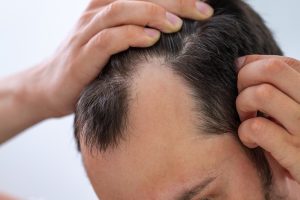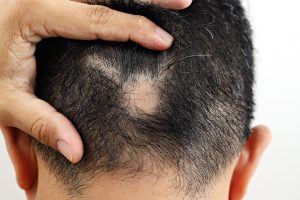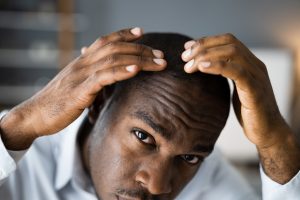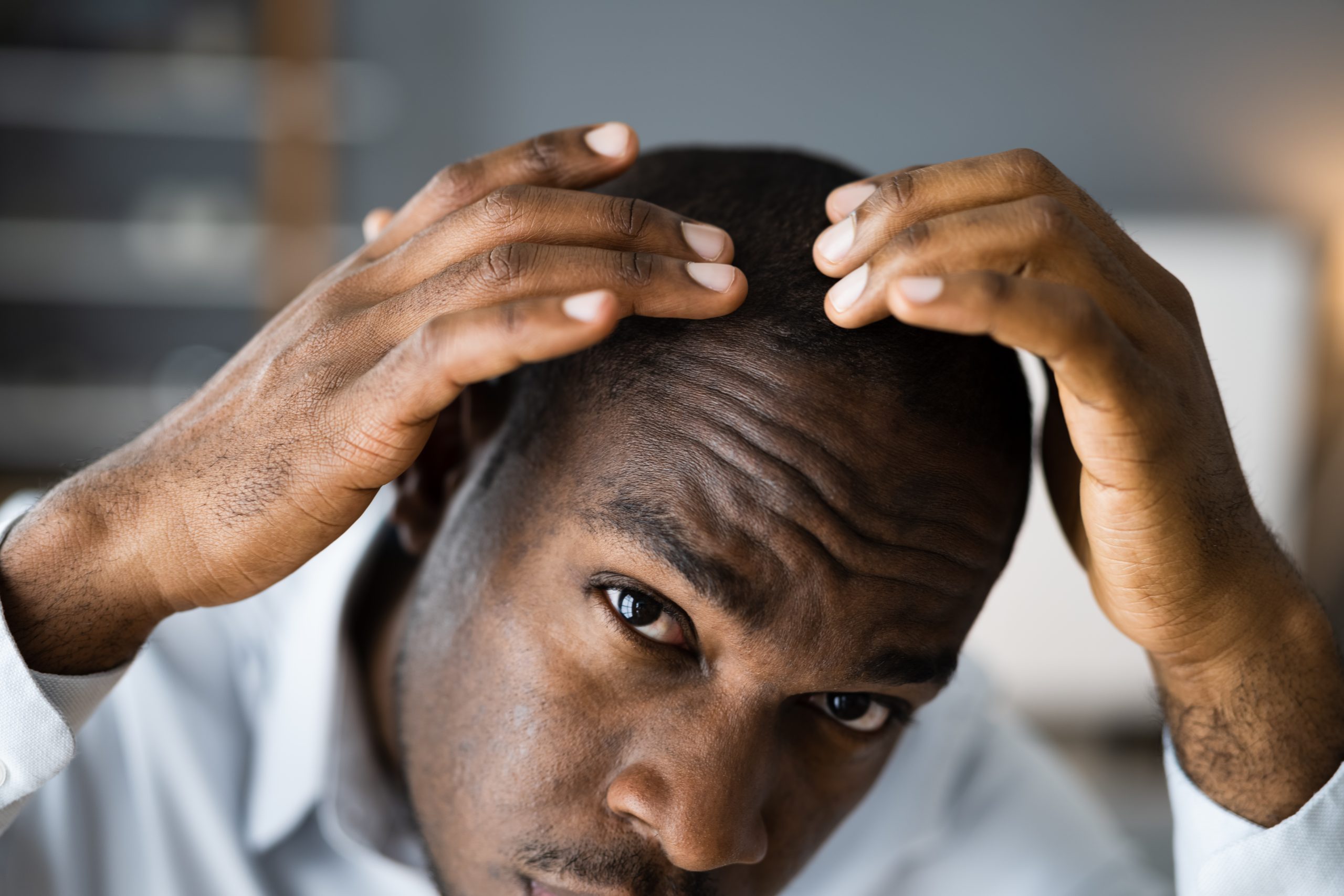Androgenic alopecia (Pattern Hair Loss) is the most common type of hair loss. This hair loss can be very emotionally and mentally traumatic, and leave people lost and without hope. It is a non-scarring type of alopecia, meaning it is not permanent and can be stopped before it gets worse. Luckily, there are many proven and effective treatments that can grow your hair back and keep it there! Most treatments take a year or more to produce the best results, so be patient! Don’t lose hope and talk to a provider at My Skin of Color to get your hair, and life, back.
What does it look like?
This type of hair loss usually looks different for men versus women.
For men, hair is usually lost on top of the head and the hairline recedes but is normal on the sides and back of the head. This is also known as male pattern hair loss.

For women, hair is usually lost diffusely all over the scalp, but the hairline stays the same for the most part.
What causes androgenic alopecia?
This type of alopecia is caused by androgens, the hormones that are responsible for masculine features. For women, the cause of androgenic alopecia is not so straightforward, as abnormal androgen levels are only seen in 1/3 of female patients. Other hormone medical problems associated with androgenic alopecia in females include polycystic ovarian syndrome (PCOS), hyperprolactinemia, adrenal hyperplasia, and rarely, ovarian, and adrenal tumors.

What are my options for treatment?
Luckily, there are many effective treatments available that can help get your hair back.
1 Minoxidil:
Topical minoxidil: The topical type comes in many formulations, including 2% and 5% solutions and foams. These must be applied every day and need time to soak into the scalp, about 2 hours before going to sleep. Usually, it takes about 6-12 months to see good results. Unfortunately, there are a few downsides to using topical minoxidil. If the medication is stopped, hair growth will stop, and you will lose the new hair that grew because of the medication. Thus, once this topical medication is started, it must be used for the rest of your life. Additionally, extra hair may grow where some people may not want it, like the face. This is a tried and true medication, but can be annoying and inconvenient to use.
Oral minoxidil: This form of medication is not approved by the FDA. It is taken once daily and the dose is increased as needed. It also takes 6-12 months to see good results. It is non-inferior and possibly superior to the topical version and can be less of a nuisance to take. This medication can grow unwanted hair on other parts of the body, hold onto extra fluid in the body, or increase heart rate. The hair shedding can also be worse when starting this medication. However, it produces such great results that most patients will continue to use this medication regardless of side effects. It can be combined with spironolactone and has been shown to be effective in this combination therapy. Oral minoxidil is a great option that is effective and worth trying.
2 Spironolactone:
This medication is a diuretic that is also used to treat hirsutism- excessive hair growth in women on the face, chest, or back. This medication blocks many enzymes in the production of androgens, which is how it helps with hair loss. Results can be evaluated after 6-9 months of treatment. This medication is a great option for female patients that experience hirsutism or acne along with androgenic alopecia.
This medication should not be used in men or pregnant women. Side effects include headaches, decreased libido, menstrual irregularities, and orthostatic hypotension (low blood pressure when standing after sitting or lying down).

3 Finasteride and dutasteride:
These medications are in the same drug class and basically prevent the production of the final androgen product. Finasteride is more commonly used than dutasteride. It is usually a 5 mg oral dose daily and takes 6-12 months to achieve hair regrowth. It is more commonly used for male pattern baldness but can be used off-label in females as well.
These medications cannot be used in pregnant women or people with a family history of breast cancer as they may increase estrogen levels. The most reported side effects are decreased libido, erectile dysfunction, and ejaculatory dysfunction.
4 Platelet-rich plasma (PRP):
PRP is made by spinning down a patient’s blood and concentrating the platelets. These platelets have many growth factors and other beneficial molecules. The plasma, now platelet rich, is injected back into the scalp. This method is best used as an add-on therapy along with other medications for hair loss. The most common side effects include pain, swelling, and tenderness of the scalp after injections. PRP can be expensive but worth it if other medications are not producing adequate results.
Any type of hair loss can be difficult to deal with and significantly impact emotional and mental health. Luckily, androgenic alopecia can be treated and get you feeling back to your previous self. With the help of dermatologists at My Skin of Color, you don’t have to fight this battle alone!
Click below to get started today.

